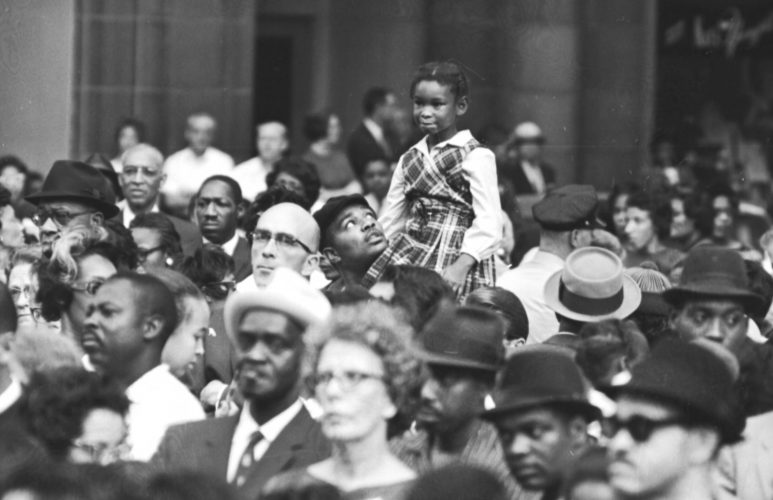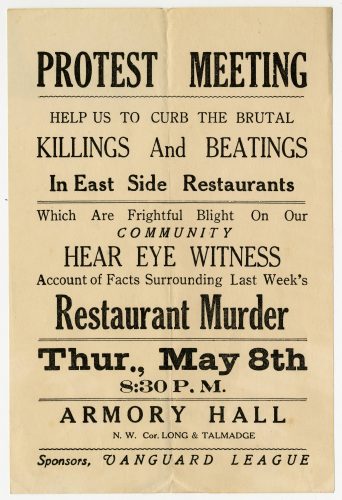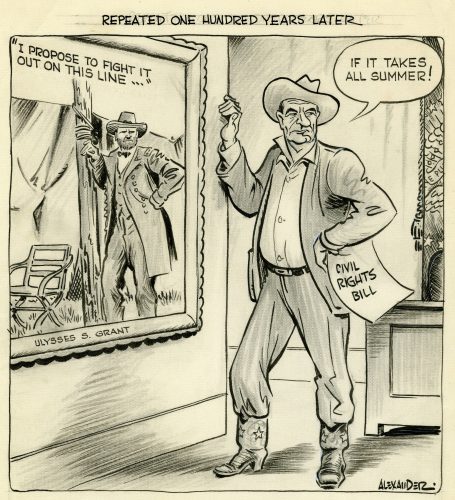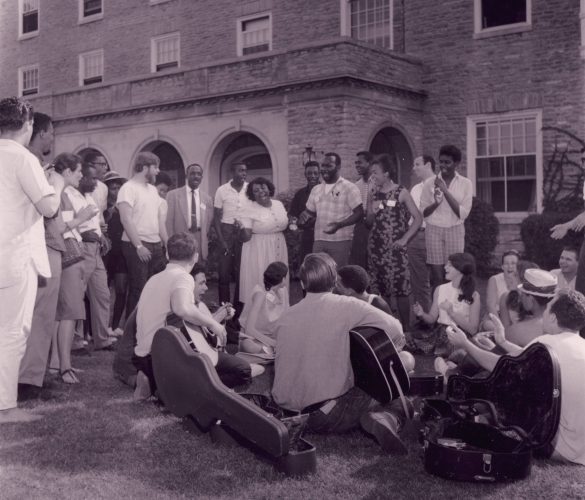“The Hopes and Dreams of Generations:” Civil Rights Laws in Ohio and the Nation

On June 19, 1963, President John F. Kennedy sent legislation to Congress that would eventually become the 1964 Civil Rights Act. Although the act was largely triggered by events in the Jim Crow South, racism occurred throughout the country, including Ohio.

Although Ohio was never a slave state, it has a long history of discrimination against non-white citizens. Delegates to the 1802 Ohio Constitutional Convention honored the Northwest Ordinance pledge to prohibit slavery northwest of the Ohio River: “There shall be neither slavery nor involuntary servitude in the said territory but any slave escaping into the territory may be lawfully reclaimed.” However, in 1804 the legislature began enacting a series of “Black Laws” designed to discourage immigration and restrict the rights and freedoms of Black residents. Black citizens entering the state had to post $500 bond, file evidence of free status, and keep documentation of free status with them in order to work. Additionally, Black residents could not vote, serve on a jury, hold public office, marry white residents, own a gun, or attend public schools. Ohio’s Black Laws were partially repealed in 1849; Black residents could testify in court and were no longer required to post a bond or register freedom papers, but they still couldn’t exercise their right to vote until the ratification of the Fifteenth Amendment in 1870 and, for women, the ratification of the Nineteenth Amendment in 1920.
The Ohio General Assembly began to address inequality in the 1880s, making Ohio one of the first states to enact civil rights legislation. The Ohio Public Accommodations Law of 1884 prohibited discrimination in public facilities such as inns and theaters; however, the law allowed only minor penalties and was poorly enforced. Ten years later, Harry Clay Smith, an Black journalist and legislator from Cleveland, introduced an amendment that instituted minimum penalties of $50 or thirty days in jail for violations of the law. Smith also introduced the Smith Act of 1896, which became the strongest anti-lynching law in the country at the time and served as a model for other states.

However, progress on civil rights legislation was slow. From the 1940s to 1959, more than thirty bills supporting fair employment practices died in the Ohio legislature. Finally, the Fair Employment Practices Commission Legislation of 1959 prohibited employment discrimination and established the Ohio Civil Rights Commission, which was responsible for investigating and remediating charges of discrimination. The commission also educated employers and the public about the new law and studied discrimination in other aspects of life. In 1961, at the commission’s recommendation, the General Assembly passed a new public accommodations law prohibiting discrimination and was enforced by the Civil Rights Commission.

The civil rights legislation proposed by John F. Kennedy in the summer of 1963 also faced challenges as it made its way through Congress. The bill went first to the House of Representatives, where it was strengthened in the Judiciary Committee but deliberately stalled in the Rules Committee. After Kennedy’s assassination in November 1963, Lyndon Johnson and key members of Congress used their political skills to advance the bill. When it was signed into law on July 2, 1964, the Civil Rights Act outlawed discrimination in public places such as restaurants, theaters, and hotels; enforced the desegregation of public schools; prevented discrimination in programs receiving federal funds; and prohibited discrimination by many employers on the basis of race, color, religion, sex, or national origin.
Thank you to Stephanie Michaels, Research and Catalog Services Librarian at theState Library of Ohio, for this week’s post!



Leave a Reply
You must be logged in to post a comment.